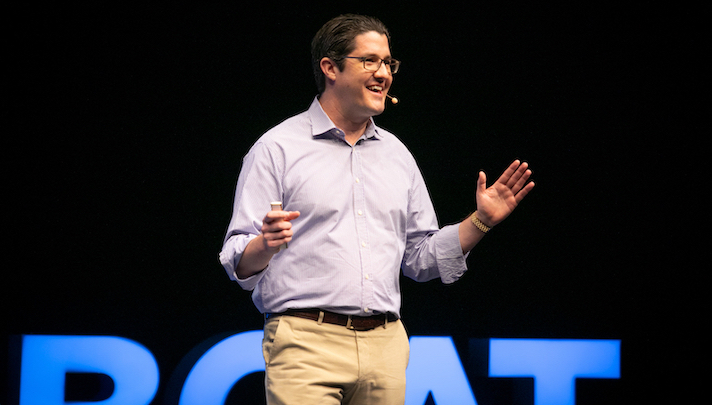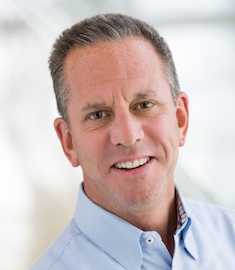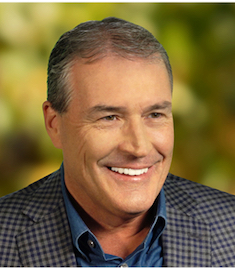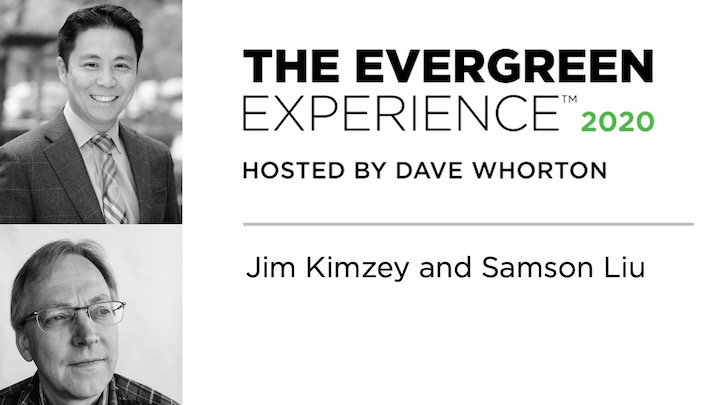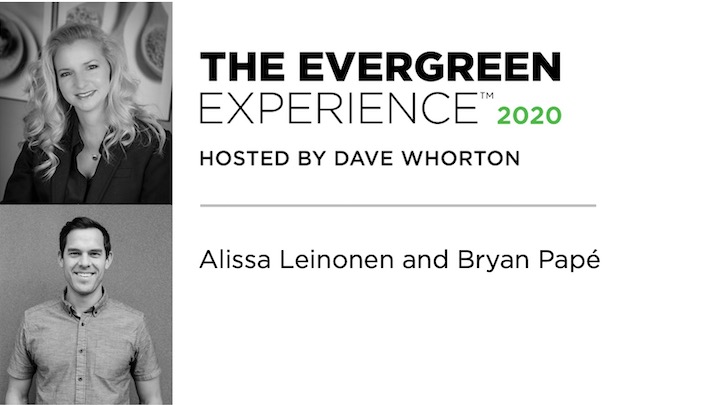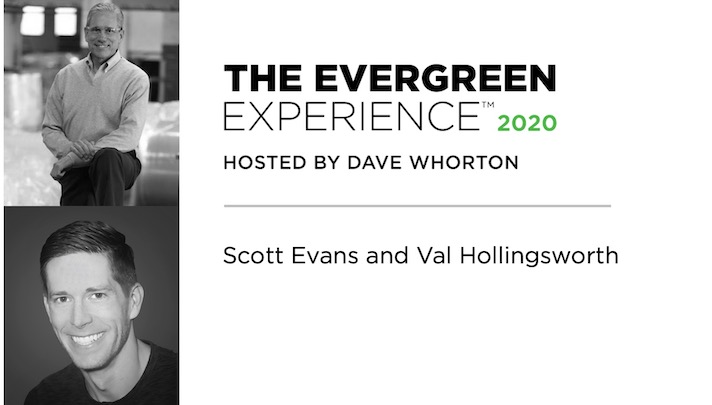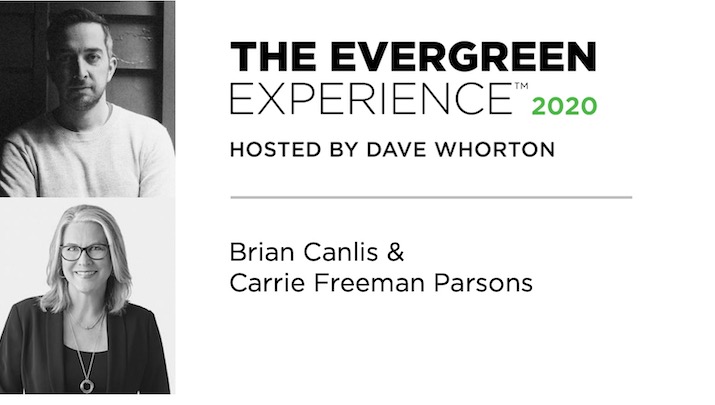Best Practices for Creating Evergreen Value
Michael Shearn is a value investor, author on the topic (The Investment Checklist), and student of Warren Buffett’s values and Berkshire Hathaway’s approach to company building. In this presentation from Tugboat Institute Summit 2019, Michael shares what he believes creates real value in companies and offers tactical takeaways for Evergreen® leaders.
First, Take Care of Each Other
[A note from Tugboat Institute: Please note the author’s postscript at the end of this article, in which he comments on the connection of this topic to the impact of the COVID-19 pandemic.]
In 2011, when I stepped into my role as President of Maritz Global Events, our company culture had been negatively impacted by the Great Recession. The meetings and events industry generally had been hit hard, and our company was no exception. Focused on doing their jobs and avoiding fallout, employees were hunkered down, and the culture reflected a widespread sense of trepidation.
As an incoming leader, the situation presented an interesting opportunity for me to establish a more open and engaged culture. Early on in my career, I had the great fortune to work for a company called Conferon, which believed in the power of culture and what it can mean to the performance of an organization and its people. At Conferon, the core value—“First, take care of each other”—had been the north star and foundational principle for a powerfully positive culture.
Conferon’s founder believed that if you take care of your employees and ensure their satisfaction to the greatest extent possible, everything else will fall into place—including, but not limited to, financial performance, customer satisfaction, and retention of both existing and new talent. This core value, shared among all employees, drove the actions, decisions, and behaviors of the company.
With that experience, I knew that prioritizing culture would be my first initiative in my new role. Fortunately, while the company was emerging from difficult times, it had, since its founding in 1958, defined itself as a “people-based culture.” The core commitment to people was there—however there was little formal structure upon which to build out culture.
Over the next year, we began a phased initiative to craft a framework for our culture. We first embarked on a learning journey, taking advantage of a local training group, Barry Wehmiller Leadership Institute. From that learning experience, our leadership team went off-site for a three-day strategic planning session, during which we tore the company down to the studs, and then rebuilt the vision, the mission, and the core values together.
Central to our new framework was the value we had embraced at Conferon, which had been so formative to my leadership development—“First, take care of each other.” We reframed that value to include Maritz Global Events employees, clients, suppliers, and our communities. Having crafted our vision, mission, and core values, we then worked to articulate our Purpose, or “why,” engaging not just company leadership but our entire team. The result of those months of effort—clearly defined vision, mission, core values, and Purpose—provided the framework for the culture that has been developing since that time.
From that place, within the year that followed, several essential programs and practices were implemented to operationalize culture. First, we embraced the ethos of the dual bottom line—measuring our success in terms of fiscal performance and people performance.
Second, we eliminated traditional, annual employee reviews and replaced them with an aspirational coaching model, which is a continuous 360° conversation between manager and employee. We created the model and then trained extensively across the organization to drive a different type of accountability. Making that change has been instrumental in bringing our culture to life.
Third, we committed to creating an opportunity for our people to embrace a broader purpose beyond the walls of our company. We formed a grassroots committee of employees to support ECPAT-USA — part of a global organization dedicated to eliminating human trafficking with a focus on children. We felt it was critically important for us to get involved in this cause because our industry—built upon transportation hubs, convention centers, and hotels—is one of the main conduits through which human trafficking occurs. The decision to come together around this cause has broadened our cultural initiative beyond company and industry walls, allowing our people to embrace a Purpose that really makes a difference everywhere we go and has become an important connection point.
In 2012, having taken these significant steps to create a framework and build out our culture, we had the opportunity to challenge ourselves by acquiring and integrating a new company. This was an especially meaningful experience for me because the company we acquired was Experient—formerly known as Conferon—where I had first come to understand the true power of culture.
In my view, integrating culture is the most important piece of M&A (and often overlooked). In this case, I had a lot of confidence in the process because I knew we had done the prerequisite culture work on our side and were already on the right journey and that, together, the two cultures would not only complement on another but actually help grow and accelerate a positive culture across the whole organization.
In retrospect, an early step in this process that I think contributed to our success was to tap a leader of Maritz Travel and a leader at Experient to head up what we called an “optimization initiative,” which included 10 different work streams that were identified as critical to that acquisition, culture being one of them. Those two leaders then created teams made up of members of both organizations and they worked in collaboration to craft what our new combined organization would look like. They asked, “What needs to be combined? What needs to be kept separate? What needs to evolve?” That allowed the Experient team to understand our culture as it was reflected in the thoughtful integration process and connected our teams right away.
Today, our focus on prioritizing culture has led to Maritz Global Events being recognized as one of the best places to work in the events industry, based on direct employee survey results, providing us external indicators of the strength of our culture. Beyond the external validation, I see the strength of our culture reflected in the high level of participation company-wide in key initiatives linked to culture, like our fight against human trafficking and the aspirational coaching model. And, our turnover is in the single digits. Maybe more important, if you were to walk around our offices today and ask employees what our core value is, they would be able to tell you that it’s “First take care of each other.”
All that said, we’re not perfect. Developing culture is a journey, but we know we have an Evergreen time horizon to continue to grow and improve.
07.07.2020 Postscript
The Evergreen 7Ps™ principles are the foundation of a purpose-driven company. As Maritz Global Events has navigated the hazards of the current pandemic, leaning into the principle of People First (Maritz Global Event’s signature core value is “First, Take Good Care of Each Other”) has been a guiding light, while also an immense challenge. The face-to-face events and hospitality industry has been decimated as a result of COVID-19. In the U.S., 75 percent of hotels have been closed, gatherings of 50 or more have largely been banned, and the airlines have greatly reduced capacity. It is estimated that this pandemic will have at least nine times the negative impact on our industry than 9/11, with over $1.2 trillion in losses (and growing).
With these sobering statistics, navigating this crisis with a People First perspective front and center has been essential. Every decision we’ve made as a company is wrapped around this belief – the best way to take care of our people is to do everything we can to ensure we have a viable business to return to when the recovery comes. We’ve remained committed to viability and treating our people with empathy and respect when delivering the most difficult of all decisions – furloughing employees, eliminating positions, and reducing compensation and benefits. As a leader, maintaining a viable business with great employees is the ultimate responsibility. During times of crisis, culture is more important than ever. Staying true to one’s purpose will ensure that our Evergreen companies endure.
David Peckinpaugh is President of Maritz Global Events.
The Evergreen Experience with Grossman Company Properties and Heath Ceramics
In this episode of The Evergreen Experience™ 2020, , recorded on June 26, 2020, Dave is joined by John Grossman, President, Grossman Company Properties, and Robin Petravic, Owner/Managing Director, Heath Ceramics. John and Robin both lead businesses that were especially hard-hit early by the impact of the COVID-19 pandemic—hotels and dinnerware/tile manufacturing, respectively. Having been forced to an almost-complete stop, both Evergreen® leaders are now emerging through uncertain and challenging conditions in their industries and share their experiences and key learnings.
The Evergreen Experience with Govig Executive Search and John Burns Real Estate Consulting
In this episode of The Evergreen Experience™, recorded on June 19, 2020, Dave is joined by John Burns, CEO, John Burns Real Estate Consulting, and Todd Govig, President and CEO, Govig Executive Search. John and Todd share their experiences leading and adapting their Evergreen® consulting and professional services companies through the COVID-19 pandemic. In addition, John share his current view on prospects for different real estate industry sectors and Todd shares his insights on executive hiring across industries.
How Innovation Led to an Unforeseen Blockbuster for Cupcake Vineyards
[A note from Tugboat Institute: In mid-March, we pivoted from our scheduled Evergreen Journal publication calendar to produce COVID-related content to address the challenges and uncertainty of this unique time. This week, we are publishing an article written before the pandemic began because we feel the topic—innovation—is one that is more relevant now than ever. We will continue to publish COVID-related content in the weeks and months ahead, interspersed with general articles and videos that are relevant and timely.]
If you’ve spent time in the wine aisle of your local grocery store recently, you know that consumers have an almost endless array of choices. There are literally thousands of wine brands competing for your attention. We actually joke that the experience of picking a chardonnay is like picking a birthday card for your spouse: You find yourself standing in front of a seemingly unending wall of options, staring at the cards, waiting for something that’s just the right fit to jump out at you. It can be a daunting task.
As a 38- year-old Evergreen® wine producer based in Livermore, California, our company, The Wine Group, has a long history of searching for and developing that magical marketing differentiator that will set our product apart. Like everyone else, we are continually seeking that “lightning in a bottle,” the brand with the magical “it” factor that will drive customers to return again and again to purchase the brand.
Our experience has led us to understand that supporting an entrepreneurial mindset among our team is essential in developing and marketing the brands that have become our biggest stars. The success of one of our best-selling brands speaks to the power of our commitment to fostering innovation throughout our organization.
In 2007, Casey G., a relatively new member of our very small marketing team, proposed an idea for a brand that tapped into what was a huge trend at the time: cupcakes. I would be lying if I said we thought it was a great idea. What did cupcakes have to do with wine?
But we knew that Casey, despite her limited experience, was very tuned into trends and had valuable perspective as an actual member of the target demographic. In her view, the then current craze for cupcakes spoke to consumers’ attraction to the idea of treating yourself to a small indulgence. So, we included the idea in our innovation process, where we regularly review and evaluate a wide range of ideas developed by our team.
As the marketing team further developed the concept, the idea gained traction. The Cupcake brand proposition resonated as people recognized the popularity and broad affinity for cupcakes—everyone has likely enjoyed one at some point in time. The branding was further developed, and the brand Cupcake Vineyards, wines that “pair perfectly with your assorted collection of moments of joy,” was born.
Because there was still a thread of uncertainty about the concept—especially among the more “pragmatic” members of the leadership team, we decided to test Cupcake Chardonnay as a first-to-market item exclusive to Cost Plus World Market in late 2007. At the same time, the leadership team decided to nationally launch what was at that time our “better” idea—Swirling Dervish, a brand you’ve likely never heard of given that it failed quickly and miserably.
Meanwhile, Cupcake Chardonnay became a huge hit at Cost Plus. This success really left us no option but to expand Cupcake out of Cost Plus and into a national launch in 2009.
We sold 300,000 cases in 2009 and over one million cases in 2010. By 2011 we had 14 different wine types in Cupcake and sold 2.4 million cases. Our Cupcake Vineyards New Zealand Sauvignon Blanc became the number one Sauvignon Blanc in the U.S. that year. By 2012, we were 3 million cases, surpassing Kendall-Jackson to become the largest brand above $8 in the U.S. Our Cupcake volume remains about 3 million cases today.
If I could tell you the exact alchemy of ingredients that led to this phenomenal success, we would have five more wines that could boast the same record (and we would never have launched Swirling Dervish). But I'd be lying if I said we knew this was going to work or that we absolutely understood why. What I do know is that the brand would never have existed if we didn’t live our shared values of being “relentlessly entrepreneurial” and innovative—and fostering those values by listening to people who have good ideas, regardless of their station in the organization.
The entire organization supported what we saw as a creative idea. The winemaking team over-delivered on quality, the sales team recognized the momentum and made the brand a priority, and the operations team found ways to supply the brand even as we blew past every projection we made. Everyone went “all in” to support Cupcake.
Today, we continue to embrace the open, supportive culture of innovation that was a factor in Casey’s idea rising to the surface. We want people to be innovative and enterprising in all areas of the company. To this end, we have an intranet site, the Lightbulb, where anybody in the company can share ideas with the marketing department. The ideas from this communal brainstorm are thrown into the mix of ideas that come from more traditional sources like market research and data analytics, giving us a robust pool of ideas to consider as we look at new product innovation.
We believe one of the reasons our process is effective is our commitment to remaining open and receptive to new and different ideas, not allowing executive-level perceptions and traditional brand thinking to stifle innovation. Rather, we trust the people and the process that brought the ideas forward and then focus on efficient execution. Once committed to a project, we aim to get a very quick read on the potential for success—and to be quick to admit when it doesn't work. In the case of Cupcake, my predecessor had the wisdom to see the early response at Cost Plus and understand the potential for national distribution—and he let the organization run with it.
Now, the downside to this focus on efficiency is that sometimes we haven't shown the patience we need; but, the upside is that we try a lot of things, and we don't waste time and resources when we see early indicators that it’s not a win.
As an Evergreen company, we understand that continuous innovation like this is critical to our long-term vision. The Wine Group is management-owned, and we view ourselves as stewards of this organization. Our goal is to leave the place better than we found it, and that commitment requires continually infusing the company with new ideas and opportunities for growth. This extended horizon is shared across the business, so that at every level, team members are asking, “what is the right thing to do for the long-term?” This mentality is embedded into our culture.
Cupcake Vineyards continues to be a core brand equity for The Wine Group. The lessons we learned from Cupcake’s unlikely success continue to pay dividends. We continue to encourage innovation from all areas, and we’ve been able to successfully develop new brands like Chloe and Imagery from the same commitment to being relentlessly entrepreneurial and listening to ideas from everyone.
Brian Vos is CEO of The Wine Group.
The Evergreen Experience with Tender Rose Dementia Care Specialists and SOHDental
In this episode, recorded on June 5, 2020, Dave Whorton is joined by Jim Kimzey, CEO, Tender Rose Dementia Care Specialists, and Samson Liu, CEO, SOHDental. Both Jim and Samson lead Evergreen® businesses in the healthcare industry, designated as essential services. Both are navigating significant challenge and, in some cases, surprising opportunities. Jim and Samson each speak to their experiences, including their shared focus on client and staff safety and the steps they have taken to strengthen their teams and processes.
The Evergreen Experience with Gourmondo Co. and MiiR
In this episode of The Evergreen Experience™, Dave is joined by Alissa Leinonen, CEO & Founder of catering company Gourmondo Co., and Bryan Papé, Founder, MiiR, a drinkware company with a social and environmental mission. Alissa and Bryan speak to the impact of COVID-19 on their respective businesses, the critical role of their Purpose, the importance of strategic partnerships and reinvention in this challenging time, and their outlook moving forward.
The Evergreen Experience with High Plains Bank and Left Hand Brewing Co.
In this episode of The Evergreen Experience™, Dave Whorton is joined by John Creighton, President & CEO, High Plains Bank, and Eric Wallace, President & Co-Founder, Left Hand Brewing Co. John and Eric, who both live and lead businesses in Colorado, speak to the impact of the COVID-19 crisis on their businesses, the innovations and adaptations that they have tried, their view on the future of their industries, and how Evergreen® principles have guided them.
The Evergreen Experience with Hollingsworth & Vose Co. and Kenmore Envelope
In this episode of The Evergreen Experience™, Dave Whorton is joined by Scott Evans, CEO of Kenmore Envelope Company, and Val Hollingsworth, President & CEO of Hollingsworth & Vose Co. Scott and Val lead manufacturing companies in two different industries and will speak to the impact of the COVID-19 crisis on their businesses, the innovations and adaptations that they have tried, their view on the future of their industries, and the way in which Evergreen® principles are informing their approach to and perspective on this challenging time.
The Evergreen Experience with Canlis and Freeman
In the inaugural episode of The Evergreen Experience™ 2020, Tugboat Institute Founder & CEO Dave Whorton is joined by Brian Canlis, President and Co-Owner, Canlis, and Carrie Freeman Parsons, Chair, Freeman, to discuss how these two Evergreen®, family-owned companies have been impacted by and adapted to the COVID-19 shutdown.
Both businesses represent industries especially hard-hit by this crisis—restaurants (Canlis) and major event management (Freeman)—and both adapted and reimagined their companies, displaying inspiring resiliency rooted in their Purpose and enabled by their Evergreen values.
